2019.03.29Field Report
Being a Part of the "AKARI" Bringing Light to People Project, Report by Volunteer Employee Reporters
2015.04.30 Field Report
In mid-March 2015, we donated 630 solar lanterns to World Vision International in Vietnam. The solar lanterns will be used in parts of Dien Bien Province in northern Vietnam where access to electricity is still poor. This was our first donation in Vietnam.
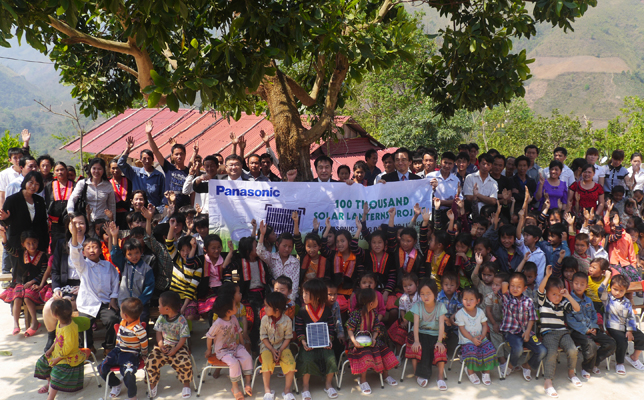
This is Akira Hoshi of the CSR & Citizenship Group.
In mid-March 2015, we made a visit to Vietnam. The purpose was for our first-ever solar lantern donation to Vietnam, our 12th recipient country of the 100 Thousand Solar Lanterns Project.
It all started from an internal meeting in Singapore in the summer of 2013. After I had given a presentation on this project, an employee of Panasonic Vietnam approached me and said, "There are villages in Vietnam without electricity too, and we'd like you to donate solar lanterns there."
Initially, Vietnam was not included in our short list of recipient countries, because data from the International Energy Agency indicated that the country's electrification rate was high, at 96% of the population. Actually, this translates to more than 3.5 million people still living without electricity, although the country's electrical infrastructure is far more developed than in neighboring countries such as Cambodia and Myanmar. Further research revealed that many people belonging to ethnic minorities, mostly in the hilly regions, live without electricity even today. Based on that knowledge, we decided that as long as there are people in need we would deliver solar lanterns to them.
The recipients were in four areas in Dien Bien Province of northern Vietnam. The recipient organization, World Vision International in Vietnam, supports children and adults who've had little opportunity to receive an education or vocational training. The NGO also provides health and hygienic care to children and expecting mothers, and supports local administrative officers and leaders of village organizations in improving their community development capabilities. Its local staff members reside in the supported areas and regularly visit villages that can only be accessed by motorcycle and foot.
On March 15, we arrived in Dien Bien Province, which is about 470 kilometers northwest of Vietnam's capital of Hanoi -- one hour by air or more than 10 hours by road. From there, we traveled another three hours by car up a rough mountain road until finally arriving in Phua Di Tong Hamlet, which was to receive the solar lanterns.
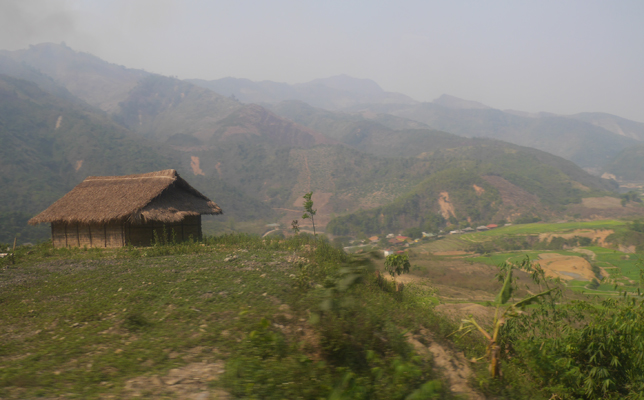
A peaceful mountain scene unfolds before us
On our way, we saw power lines running deep into the mountains, but could see that they did not reach homes at higher elevations. In some cases, these homes are served by micro-hydro power generation systems, but these systems can only be used for several months a year, since they cease to function during the dry season.
In Phua Di Tong Hamlet, the donation event was held at night. Many villagers, dressed in traditional costumes, gathered for the event in the pitch black. The sight of the people listening -- wide-eyed with interest as we explained how to use the solar lanterns -- is unforgettable.
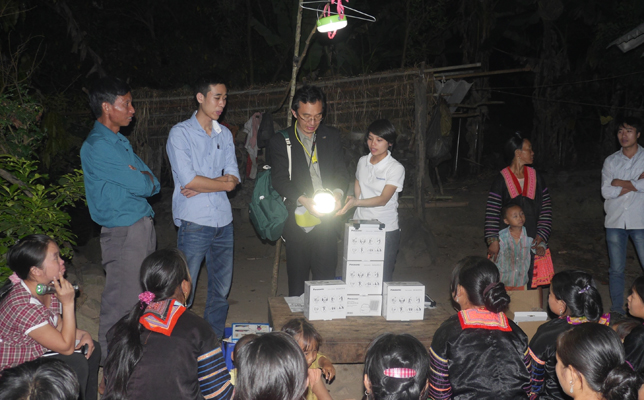
The donation event and orientation were held under the light of a solar lantern.
The solar lanterns will be used in nutrition classes offered by World Vision International in Vietnam, as well as village kindergartens and public gatherings. A woman teaching kindergarten used to prepare for classes under the light of a kerosene lamp, which is not only dark but also gives off smoke that is hazardous to health. Today, she is delighted that the solar lantern will let her see what she is doing, without the health concerns of kerosene.

There is a huge difference in brightness of a kerosene lamp compared to a solar lantern.
The next day, we conducted a donation ceremony in the provincial capital of Dien Bien Phu, followed by another event in Nam Chua hamlet.
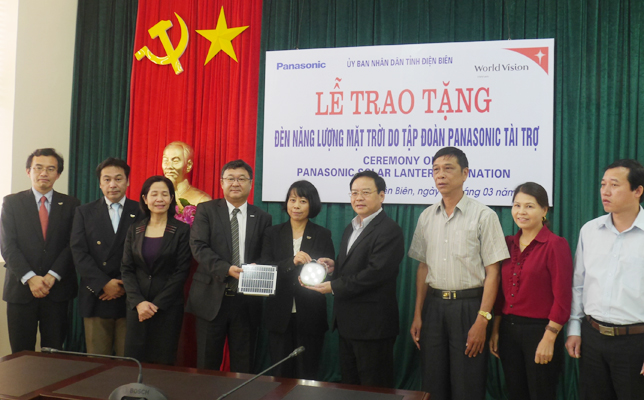
Donation ceremony attended by top officials of the Provincial People's Committee of Dien Bien, representatives of the districts' offices and World Vision International in Vietnam.
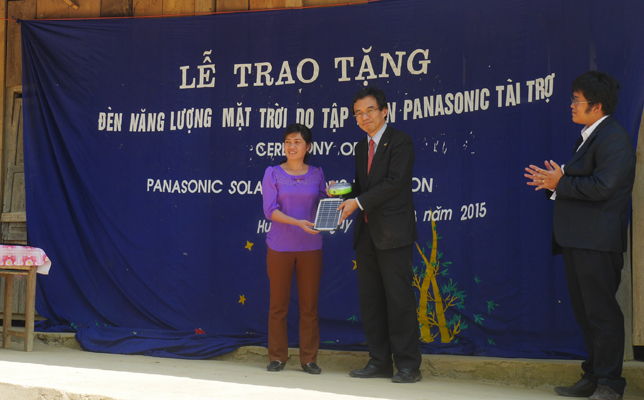
In Nam Chua Hamlet, the donation event was held at the kindergarten and elementary school where the solar lanterns will be used.
After visiting two villages deep in the mountains, we realized that there were certainly people in need of solar lanterns. Even though the country's penetration rate of electricity may be high in terms of statistics, we learned through the recent visits that there are indeed many lives obscured by the numbers.
Vietnam has seen astonishing growth in urban areas in recent years as its economy skyrockets. Despite the government's ongoing efforts to distribute the benefits of this growth to people in every corner of the country, there are still many areas that are being left behind. We will continue to deliver solar lanterns to people in true need, through careful research, verification and cooperation with organizations and people that have extensive networks in the field.